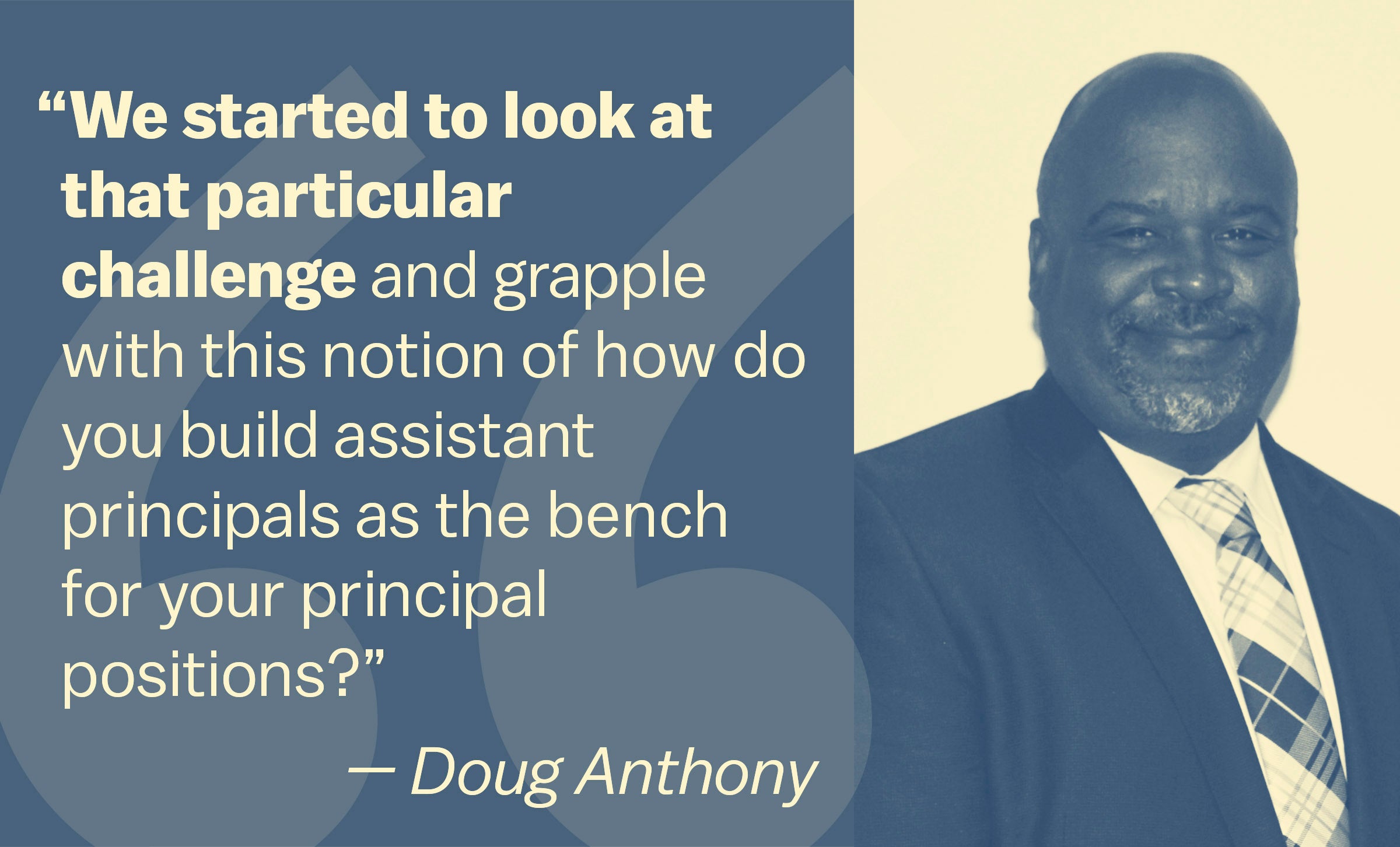“It’s time to start paying more attention to the role of the assistant principal, an increasingly prevalent position in our nation’s schools,” writes Will Miller, Wallace’s president, in a foreword to a 2021 research synthesis about the role of assistant principals. The report found that the AP role—which for many aspiring school leaders is the last step on the route to becoming a principal—has received far less attention than other roles such as the principal or principal supervisor. APs are often overlooked for opportunities that would develop and strengthen essential skills needed to lead a school, despite them being one step away from the principalship.
According to the report, the assistant principal role has untapped potential to achieve three important goals: diversifying the principalship, preparing effective principals, and achieving equitable outcomes for students. It also finds that people of color and women are not equitably promoted to the principalship.
Doug Anthony, associate superintendent of the Office of Talent Development in Prince George's County Public Schools, shared on Wallace’s Principal Pipeline Podcast that many APs in his district had great leadership potential, but they were not given the right training or tools to succeed.

We had several assistant principals that we believed were our inherent bench, but we weren't necessarily developing them in a way that would lead them to be successful as principals.
“We had several assistant principals that we believed were our inherent bench, but we weren't necessarily developing them in a way that would lead them to be successful as principals,” he says. “We started to look at that particular challenge and grapple with this notion of how do you build assistant principals as the bench for your principal positions?”
The district worked to develop its own in-house curriculum and a program for seasoned assistant principals called the Aspiring Leaders Program. “We could start giving them not only theoretical support, but actually some of the practical applications that they would need to move into the job more effectively,” Anthony says.
The authors of the 2021 research synthesis gave some clear recommendations on how districts can support APs, including:
- Develop standards and tasks that are consistent with the AP job responsibilities
- Create more structured recruitment and mentoring of people of color and women and clearer policies for advancement
- Provide principals with professional development on how to mentor assistant principals and delegate leadership tasks to help them grow and advance
For district leaders that want to examine and improve how their district prepares assistant principals for the job, this guide by Policy Studies Associates could be a good starting point. It describes steps to developing a strong approach to advancing APs to the principalship. The guide also breaks down the work into three components—forecasting principal vacancies, identifying assistant principals who have significant potential to fill the principal post, and preparing APs for the job.
With better training and development, assistant principals could make more powerful contributions to improving schools and advancing educational equity for students, as well as become better prepared for their next job.



